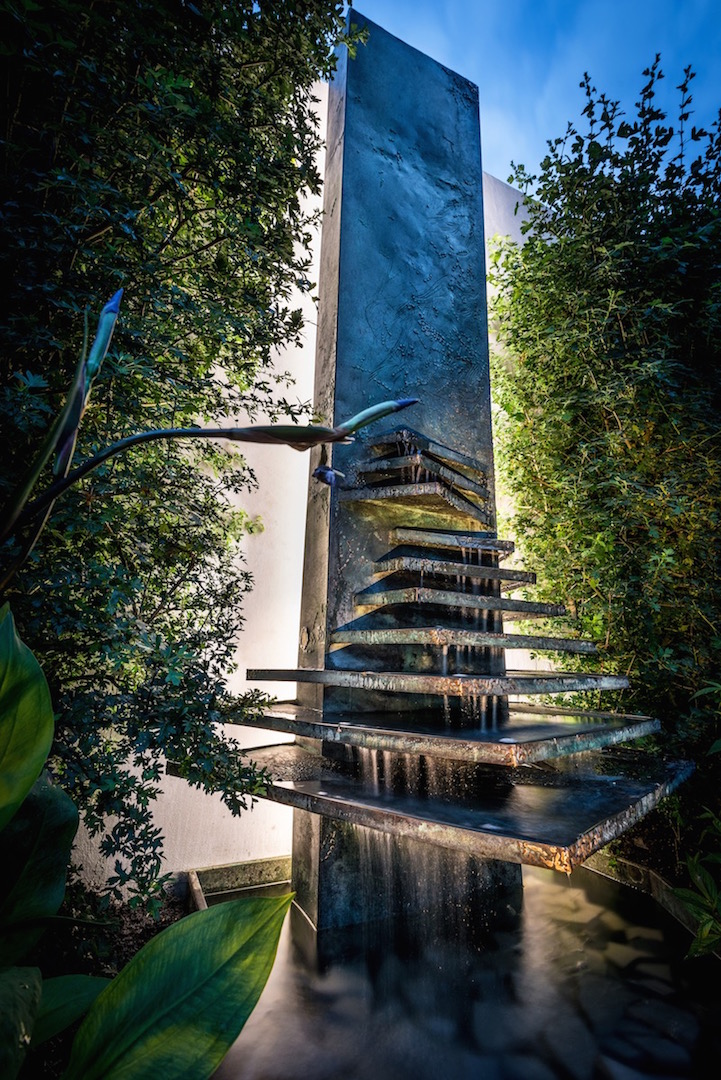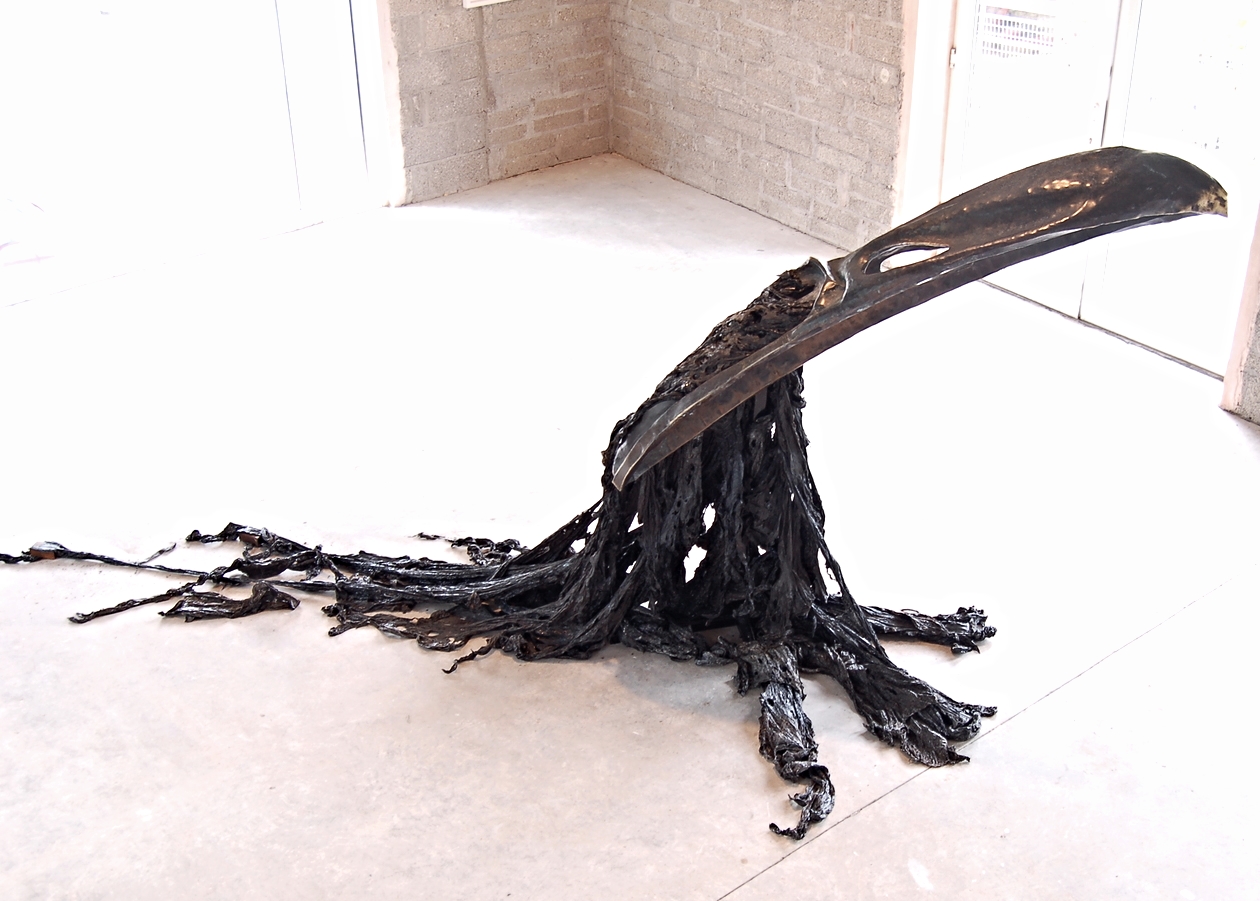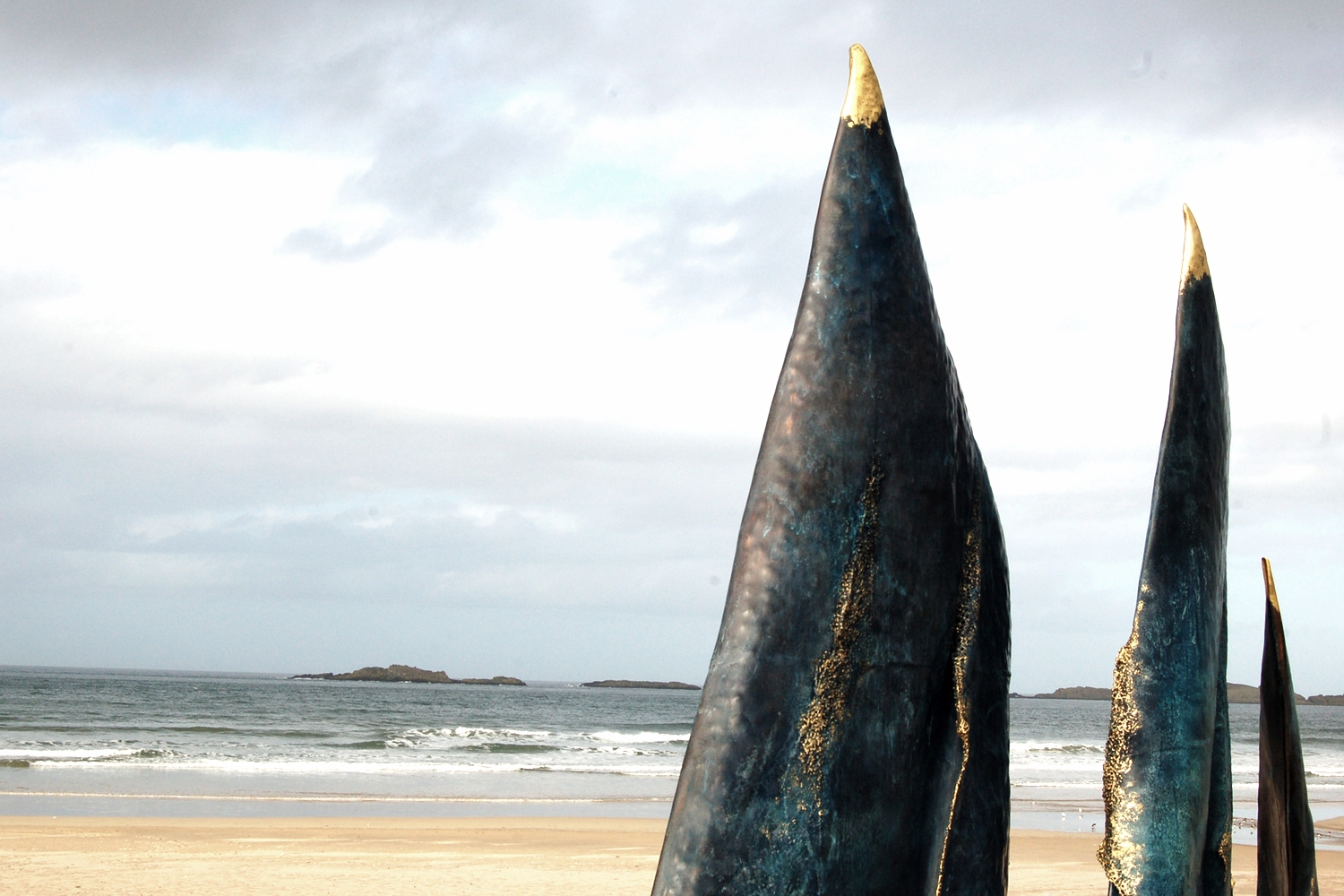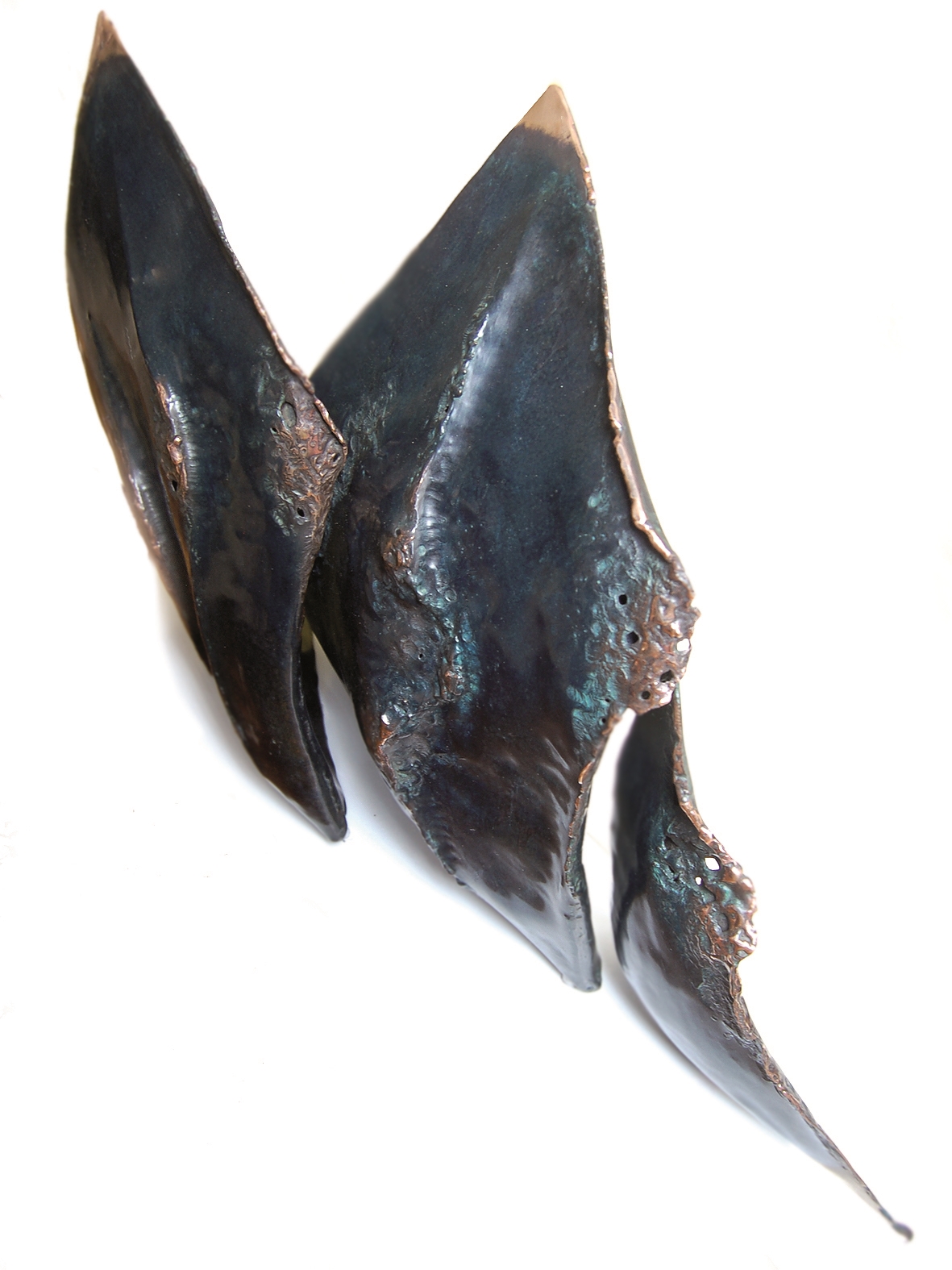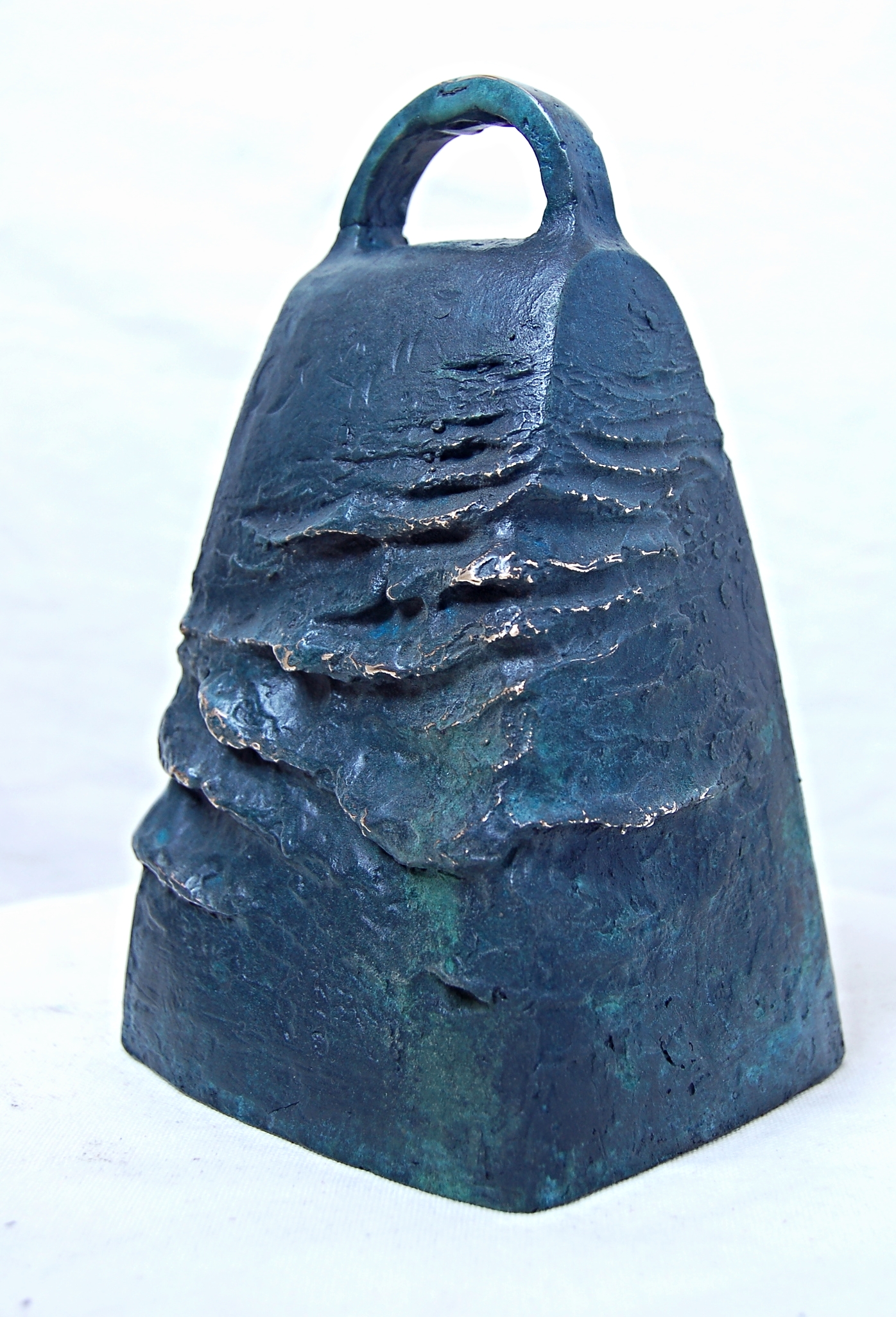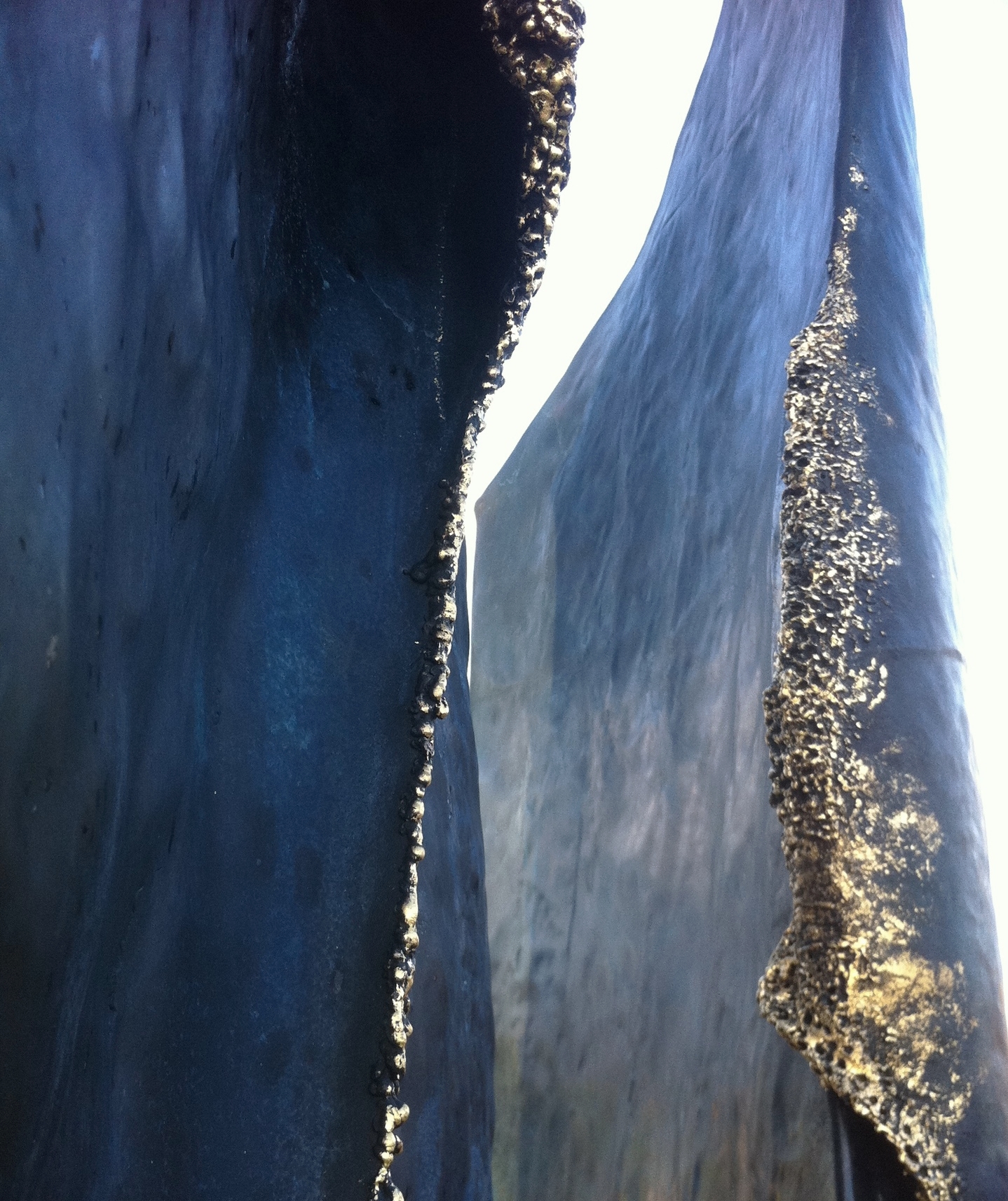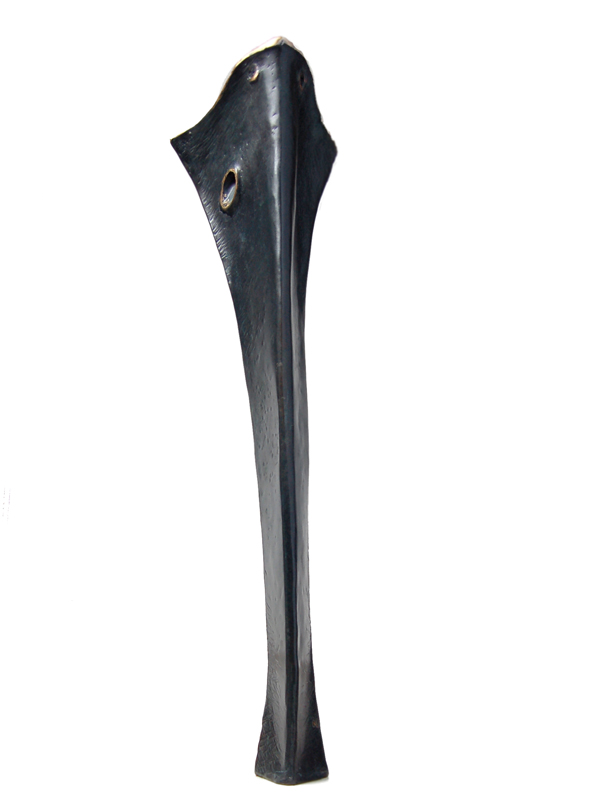North Down Museum in Bangor recently commissioned two replicas of the 9th century Bangor Bell found at St. Columbanus' Bangor Abbey site in 1780, using authentic medieval processes for their fabrication. An exciting challenge as the bell is 15" high and weights more than 10kg! After making the waxes, Karen completed the intricate decoration and gave the pieces a first mould coat in the clay, sand and horse dung mix in early February. Seven more coats were added over the following three weeks and three moulds were fired and wrapped in hessian with clay slip. We cast the bells last week and they are now ready for delivery to the museum for public display. The process gave valuable insights into the making of mediaeval insular handbells and helped to resolve some of the mysteries of the Bangor Bell. For more information, visit the Medieval Bells page of the website.
Thanks to Karen Hendy (decoration, casting and chasing), Cormac Bourke (historic advice), Donagh Carey and Nick Kottler (casting).
The finished bell replicas - full size and half size
Detail of the intricate decoration on the base of the bell
Mould fragment of the decorated base, showing the full range of mould layers from fine to coarse
The excitement of breaking the mould after casting...
The moulds drying in the rare winter sun...
The first mould coat drying on the wax pattern with the decoration still just visible...
Karen is brushing on the second coat of mould mix
The finished wax patterns with spurs and vents














